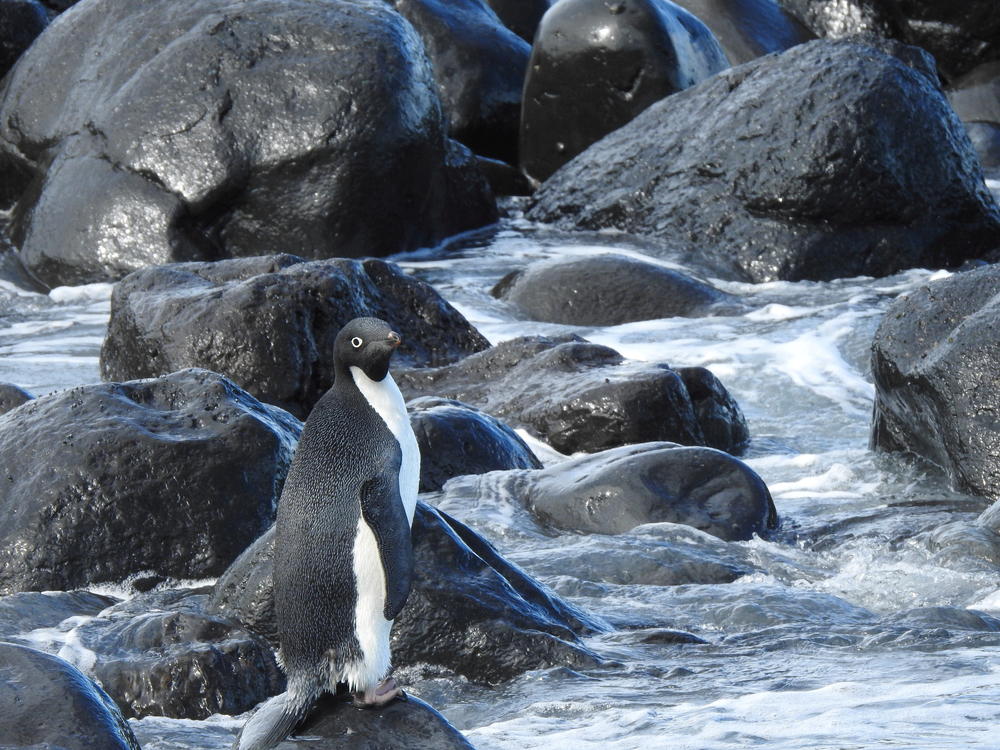Section Branding
Header Content
An Antarctic penguin ends up on New Zealand shore, 3,100 miles from home
Primary Content
Updated November 13, 2021 at 3:58 PM ET
A beach in Christchurch, New Zealand, had an unexpected visitor this week — a penguin that had traveled 3,100 miles from its native Antarctica.
The bird is known as an Adélie penguin and is the classic black and white tuxedo-looking one. This instance appears to be only the third time that an Adélie penguin has come up to New Zealand's shores.
The first sighting was a dead penguin found in 1962; a live bird was spotted in 1993.
The Kaikoura wildlife hospital in New Zealand posted on Facebook saying that tests done on the penguin showed it was underweight and dehydrated. The bird was fed fluids and fish smoothies.
The Department of Conservation said it cared for the penguin overnight before releasing the animal back into the wild at Banks Peninsula — on the east coast of the South Island, which is where Christchurch is located.
"This bird is a long way from home and was a little worse for wear when he was discovered on a Christchurch beach yesterday," the department posted Thursday on Facebook.
It's not clear why this particular penguin made its way to New Zealand, but if it happens to know the roots of its species, it very well could have been traveling to its historic home.
Scientists studied the genetics of 18 species of modern-day penguins and revealed last year that 22 million years ago, penguins came from the coasts of Australia, New Zealand and nearby islands of the South Pacific.
A website that catalogs New Zealand's birds says more than a third of the world's population of Adélie penguins live in the Ross Sea sector of Antarctica.
But its population has been severely impacted by climate change and rising temperatures.
NASA highlights a paper written in 2016 in Scientific Reports that shows about 30% of current Adélie colonies may be in decline by 2060 and about 60% of the present population may be declining by 2099.
Copyright 2021 NPR. To see more, visit https://www.npr.org.

